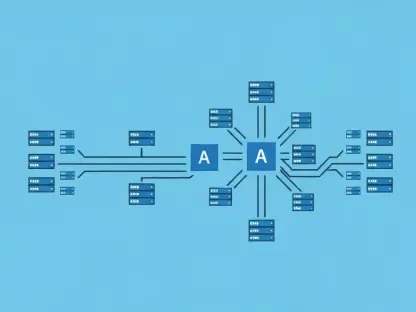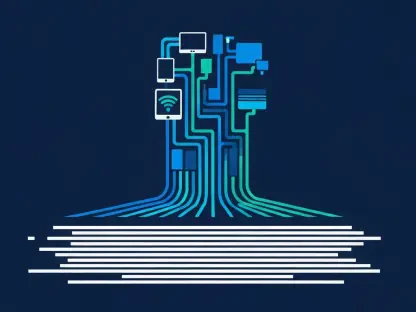Integration testing plays a pivotal role in ensuring software quality, particularly when dealing with microservices and distributed systems. However, managing external dependencies such as databases, message brokers, or web servers during testing can be cumbersome. Testcontainers, an open-source library that leverages Docker, significantly reduces this complexity by providing lightweight, throwaway instances of these services. This article offers a step-by-step guide to help you simplify your integration testing strategy using Testcontainers and Docker.
1. Identify Your Container’s Image
The first step in utilizing Testcontainers effectively is to determine the exact Docker image required for your application. Knowing which images to use can streamline the integration testing process, enhancing both the reliability and efficiency of your test environment. Common examples include database images like PostgreSQL or MySQL, as well as other services like Redis. Identifying the right image involves understanding the specific dependencies your application needs to interact with and encompasses checking for compatibility, performance, and feature sets. Once you have a clear idea of these requirements, selecting the appropriate Docker image becomes a straightforward task. This crucial initial step sets the stage for a more organized and targeted testing process.
Understanding your application’s dependencies and their respective configuration requirements helps ensure that your tests emulate real-world scenarios as closely as possible. For instance, if your application depends on a specific version of PostgreSQL or requires particular environment variables, making an informed decision upfront can save you considerable time later in the testing cycle. By selecting the correct image from the outset, you essentially lay a solid foundation for the subsequent stages of setting up and running your integration tests.
2. Define and Configure the Container
Once you’ve identified the required Docker image, the next step is to establish a GenericContainer object using that image. In Testcontainers, this involves configuring necessary parameters such as exposed ports, environment variables, and any other settings crucial for the container’s operation. This step aims to ensure that the container mimics your production environment as closely as possible. Establishing these parameters allows for reliable, consistent test executions that can catch issues early in the development cycle before they escalate.
Defining and configuring the container in the right way is crucial because it allows the test environment to behave just like the real environment. For instance, database transactions, network protocols, and file system interactions can all be configured within the container to match your production setup. Taking the time to configure these settings correctly ensures that your tests will be accurate and provide meaningful results. Precise configuration mitigates the risks associated with differing environments, thereby leading to more reliable and reproducible test outcomes.
3. Initiate the Container
After successfully defining and configuring your container, the next logical step is to initiate it using the start method. This method ensures that your application service within the Docker container is up and running, making it ready for testing. By initiating the container, you validate that all configurations and parameters have been set up correctly, and you prepare the environment for executing integration tests. This initialization step is critical for confirming that the container starts without errors and that it can interact as expected within your test suite.
Starting the container also provides an opportunity to run preliminary checks to ensure that the service within the Docker container is functioning correctly. For instance, if you are using a Redis container, you might perform some basic read and write operations to confirm its readiness. Once the container is up and running, continuous integration systems can seamlessly include these tests in their pipelines. This step ensures that any change in code is automatically tested against these predefined environments, thereby maintaining a high standard of code quality and reliability.
4. Implement Cleanup Mechanisms
One of the often-overlooked aspects of integration testing is implementing automatic cleanup processes for Docker resources post-testing. It’s essential to remove all the resources created during the tests to prevent your system from becoming cluttered, which can lead to inconsistency and resource exhaustion. Tools like the Ryuk sidecar container can be integrated to manage resource cleanup automatically. Ryuk ensures that all Docker containers, networks, and volumes created during the test are cleaned up efficiently, even in cases where the test process crashes or terminates unexpectedly.
Integrating an automatic cleanup mechanism into your test framework minimizes the risks associated with leftover resources, ensuring system stability over multiple test cycles. By binding this cleanup process to the lifecycle of your test process, you can effectively manage resources without manual intervention. When containers, volumes, or networks are properly cleaned up after each test run, you eliminate overhead and maintain system performance. Therefore, setting up efficient cleanup mechanisms is not just a good practice but a necessity for maintaining a consistent and reliable test environment.
5. Integrate with Your Test Framework
To fully leverage the capabilities of Testcontainers, it’s crucial to integrate it with your existing test framework, such as JUnit. This synchronization ensures that containers are appropriately started, stopped, and removed within the testing lifecycle. By integrating Testcontainers with your test framework, you automate the management of external dependencies, facilitating a seamless and efficient test execution process. This integration also enhances your ability to run tests independently, without depending on shared environments that can lead to test pollution and inconsistencies.
Enhancing your test framework with Testcontainers allows you to focus on writing meaningful tests rather than managing complex dependencies manually. The framework handles the orchestration of these containers, abstracting away the underlying complexities. With this integration, each test gains a fresh environment, free from the side effects of previous tests, ultimately leading to cleaner, more reliable results. This approach harmonizes the setup, execution, and teardown phases of your tests, delivering a smoother and more coherent testing experience overall.
6. Utilize Preconfigured Modules
One of the standout features of Testcontainers is its rich library of preconfigured modules tailored for various technologies. These modules encapsulate best practices and significantly streamline the process of integrating external services into your test suites. Whether it’s a database like PostgreSQL or MySQL, a message broker like Kafka or RabbitMQ, or a full-fledged application environment like Selenium for browser testing, these prebuilt modules reduce the overhead involved in setting up and configuring these services for testing purposes.
Utilizing these preconfigured modules makes it easier to maintain consistency and reliability in your test environments. These modules come optimized for performance and reliability, ensuring that your tests run smoothly and efficiently. By leveraging these prebuilt configurations, you not only save time but also reduce the room for error, making your integration tests more effective. These modules serve as ready-made solutions that can be easily integrated into your test suite, ensuring that you’re following industry best practices for testing various technologies.
7. Deploy to Testcontainers Cloud
To further alleviate the load on your local machine, consider offloading container execution to Testcontainers Cloud. This approach enables you to run complex, resource-heavy tests in a scalable cloud environment, freeing up local resources for other tasks. Testcontainers Cloud integrates seamlessly with your existing Testcontainers setup, requiring no changes to your Testcontainers code. By deploying to the cloud, you gain architectural parity with the desired Docker runtime, ensuring that your test environments are consistent and reliable, irrespective of local machine constraints.
Offloading to Testcontainers Cloud allows for more efficient utilization of resources, enabling you to run larger and more complex tests without worrying about local resource limitations. This cloud deployment enhances both the speed and reliability of your tests, providing a scalable solution for handling intensive testing workloads. The move to the cloud also reduces the risk of resource conflicts and exhaustion, ensuring that your test process runs smoothly. This approach makes it easier to maintain test consistency and efficiency, leading to a more productive development environment.
8. Verify Container’s Readiness
Ensuring that your container is fully initialized and ready to accept connections is a critical step in the testing process. This can be achieved using language-specific methods to check for readiness, such as examining logs for specific service availability messages like “Ready to accept connections.” Verifying container readiness confirms that the service within the container is up and running, ensuring that subsequent tests interact with a fully operational environment.
By implementing readiness checks, you mitigate the risk of test failures due to services not being fully initialized. This step ensures that your tests are executed against a stable environment, leading to more reliable and meaningful test outcomes. Readiness checks can be integrated directly into your test framework, providing automated validation before proceeding with further tests. This not only enhances test reliability but also streamlines the overall testing process, ensuring that your integration tests are both efficient and effective.
9. Optimize and Iterate
Continuous optimization and iteration are key to maintaining an effective testing strategy. Regularly refining your Testcontainers configurations and cleanup strategies can significantly enhance test reliability and efficiency. This involves continuously monitoring test outcomes and making necessary adjustments to container configurations, cleanup processes, and readiness checks. By iterating on these configurations, you ensure that your tests remain aligned with evolving application requirements and industry best practices.
Ongoing optimization helps in identifying and resolving potential inefficiencies or issues in your test setup. By staying proactive in refining your testing strategies, you enhance the overall quality and reliability of your software. This iterative approach also fosters a culture of continuous improvement, ensuring that your testing processes evolve in tandem with your application’s development. By regularly reviewing and optimizing your Testcontainers setup, you create a robust and flexible testing environment that can adapt to changing needs and deliver consistent, reliable results.
10. Monitor and Explore Best Practices
Integration testing is crucial for maintaining software quality, especially when working with microservices and distributed systems. These systems involve various external dependencies such as databases, message brokers, and web servers, which can make testing a challenge. Managing these dependencies during the testing phase often becomes complicated and time-consuming. However, Testcontainers offers a solution.
Testcontainers is an open-source library that leverages Docker to create lightweight, temporary instances of your external dependencies. This approach significantly streamlines the testing process by making it easier to set up and tear down these essential components. Instead of manually configuring and managing test environments, developers can use Testcontainers to automate this setup, thereby reducing overhead and allowing them to focus more on writing tests and improving software quality.
This article guides you through the process of simplifying your integration testing strategy with Testcontainers and Docker. From configuring your first Testcontainer to running comprehensive integration tests, you’ll gain insights into best practices and common pitfalls. You’ll also learn how to create efficient, repeatable testing environments that mimic production conditions, helping you catch issues early in the development cycle. By the end of this guide, you’ll be equipped to enhance your integration testing methodology, making your software development process more robust and reliable.









